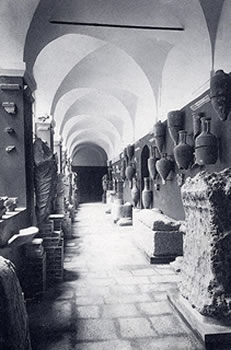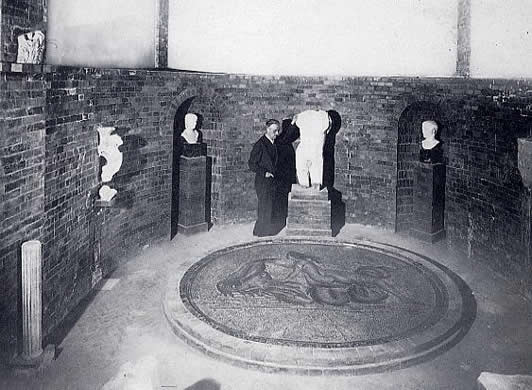History of the museum

The creation of the La Spezia museum
The Civic Museum of La Spezia was founded in 1873 around a first nucleus of naturalist collections donated by Cesare Pondenzana (1840-1884), Giovanni Podenzana's father. With the encouragement and help of the La Spezia geologist Giovanni Capellini, only three months after its foundation the Museum already housed, besides the zoological collections, the archaeological findings brought to light during the excavations of the basins and docks of the Military Arsenal, as well as some parchments, geographical maps and documents regarding the history of the town. Later, at the turn of the century, there was a considerable boom in palaeo-palethnological research on the territory, conducted by eminent scientists including Giovanni Capellini himself.
|
|
Reperti romani esposti.
|
The ever-increasing interest in the territory and its most ancient history led to very important archaeological discoveries. From the first decades of the 20th century the Museum was enriched with stelae statues belonging to the Copper and Iron Ages. The continuous influx of archaeological, naturalist and ethnographic materials and the numerous donations from local citizens and scholars led to numerous changes of premises for the Museum: from the small rooms on the ground floor of the Civic Theatre to larger and larger spaces such as the Town Hall in corso Cavour, the rooms in the town grammar school, Palazzina Crozza, where the Civic Library is now located, the church and convent of the Clarissas, Palazzina Crozza again, and finally its present location, the Castle of San Giorgio, restored and returned to the citizenry with its new layout and the exhibition of the Civic Archaeological Collections.
|
Ubaldo Formentini tra i reperti romani di Luni esposti nell'abside dell'ex-chiesa del
|
Ubaldo Formentini
The Museum is dedicated to Ubaldo Formentini, who was the director of the Library and Civic Museum from 1923 to 1958, making them the ideal centre of La Spezia cultural life. La Spezia had obtained its autonomy as a province and Formentini, who had been one of the most active promoters of this recognition became, with his special qualities of acute investigator of the history and customs of the people of Lunigiana, an example and guide for the formation of a civic pride equal to the dignity of the new provincial capital.



